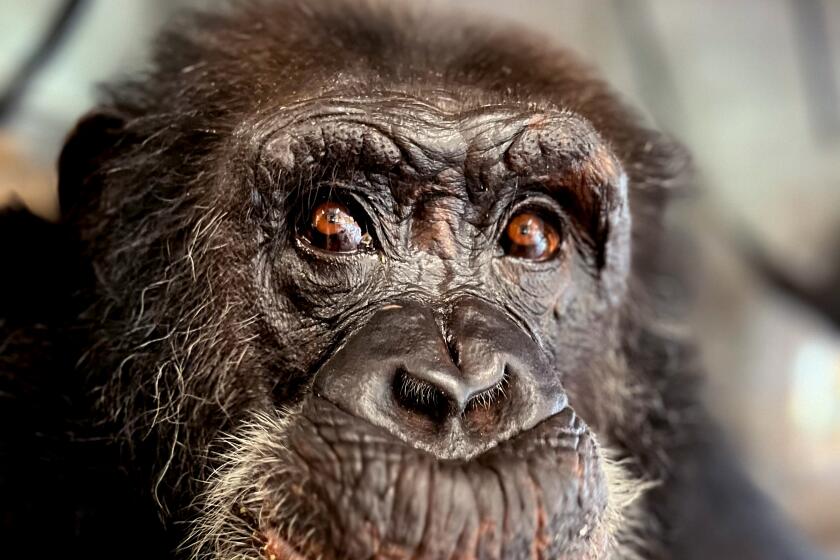New U.S. travel restrictions leave Iranian woman in L.A. museum show in artistic limbo
Ooldouz Alaei Novin’s three-screen video installation about the Iranian diaspora depicts goldfish frozen in blocks of ice, swinging from trees in the desert air, along with footage of a woman’s hands rooting through the dirt while transplanting violets.
A languid visual poem called “Our Persian Garden,” the work has only gained in resonance following President Trump’s executive order to temporarily prohibit citizens of seven predominantly Muslim countries from entering the U.S. Oversaturated with light and featuring a soundscape of wind and rushing water, “Our Persian Garden” speaks to feelings of dislocation and alienation that Alaei Novin and other Iranian immigrants have long felt in the U.S., she says. A sense of impermanence, a feeling of being caught between two cultures, pervades their lives.
“It’s suspension,” says Alaei Novin, who started work on the video as her master’s thesis at New York’s School of Visual Arts three years ago. “When I moved here, I felt displacement, loss, transplantation. For us, it’s like all the time being suspended, just like the fish — they are in their habitat, which is water, but it’s frozen and they’re just hanging.”
An excerpt of Alaei Novin’s piece is included in “Focus Iran 2: Contemporary Photography and Video,” a juried biennial organized by the Farhang Foundation and on view at the Craft & Folk Art Museum in L.A. (Alaei Novin clarified that no goldfish were harmed in the making of the video; she filmed her own fish, which were frozen after they had died naturally.) It’s little more than four minutes long, but the video carries new meaning now that hundreds of people, including her brother in Tehran, find themselves in a state of suspension — unable to return to the U.S.
“It’s so scary,” she says. “We are watching the news all the time. You just don’t know what is going to happen tomorrow.”
SIGN UP for the free Essential Arts & Culture newsletter »
Alaei Novin hasn’t seen her brother, an engineering student who’s six years younger, in more than a year. He bought a ticket to New York months ago with plans to visit his sister there and then travel with her to L.A. to see “Focus Iran 2.”
“But now he can’t come,” she says, her voice cracking. “My brother was just visiting me, it’s not a really big a deal. But other people have children here.”
Alaei Novin’s biggest fear, she says, is not being able to travel freely between her adopted home of New York, where she graduated last year and is looking for a job in photography, and her home in Tehran. She says she’s long envisioned being rooted in both countries, and traveling back and forth is integral to her work, she says.
“My art has always been about Iran and the social political climate of the country,” she says. “So I can’t make art about that if I’m disconnected. Iran is a country that’s constantly changing, so if you don’t visit you know nothing. And I love my country. I want to be able to go back and forth.”
The feeling of limbo that sparked her master’s thesis is something she feels daily.
“If the situation stays as it is, I should either stay here or go back home. And I don’t think I’m able to stay here and never go home,” she says.
One thing is certain, Alaei Novin says: “Either place, I will continue to make art. That’s what I do.”
“Focus Iran 2: Contemporary Photography and Video,” Craft & Folk Art Museum, through May 7, 2017. See cafam.org for times and ticket info.
Follow me on Twitter: @debvankin
Life in Iran: Contemporary photography exhibit tries to build a cultural bridge
The Getty acquires Miranda July’s feminist DIY video archive for ‘Joanie 4 Jackie’
LACMA acquires the popular ‘Rain Room’ for its permanent collection
More to Read
The biggest entertainment stories
Get our big stories about Hollywood, film, television, music, arts, culture and more right in your inbox as soon as they publish.
You may occasionally receive promotional content from the Los Angeles Times.











